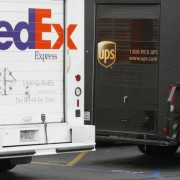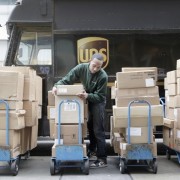Carrier Liability Limitations Shippers Need to Know
It is very obvious that during this continuing period of Covid-19 work from home requirements, that many folks will continue to order more and more products on-line to then be delivered to their homes, rather than venture out to retail outlets. This has and will continue to stretch the delivery networks of UPS, FedEx, the US Postal Service, as well as many other Last Mile Delivery carriers.
Due to this tremendous increase in home deliveries, both UPS and FedEx have not only put a hold on their Guaranteed Service Refund programs, but have also placed a number of additional surcharges which essentially punish major shippers for significantly increasing the weekly average package volumes they ship. The net result is an increase in parcel shipping costs that can add significant dollars to a company’s parcel shipping budgets.
Well, to add insult to injury, if that same parcel shipper assumes that if the parcel carrier they utilize for those home deliveries cannot provide a clear delivery receipt acknowledging the delivery to their customer that the carrier would be liable to pay the shipper for the value of that “lost” or “non-delivered” package. Well, that just may not be the case. As always, the devil is in the details.
Take for instance the provisions listed in the FedEx Ground Tariff under the section titled “Liabilities not assumed” This Tariff provision lists 40 separate exception provisions where FedEx claims they will not assume liability. For the purposes of this post, we are going to limit our analysis to just three of those exceptions which are certainly worth analyzing.
FedEx Ground will not be liable for, nor shall any adjustment, refund or credit of any kind be given as a result of, any loss, damage, delay, misdelivery, nondelivery, misinformation or failure to provide information caused by or resulting in whole or in part from:
- Our Inability to provide a copy of the delivery record or a copy of the signature obtained at delivery.
Isn’t the real reason a shipper would require a signature at time of delivery to document the fact that the shipment was received, who signed for the delivery and the date and perhaps even the time of the actual delivery. One would think so, but FedEx seems to have a different opinion.
- Your failure to ship goods in packaging approved by us prior to shipment where such approval is recommended or required.
How would the shipper even know that their package needs to be approved by FedEx prior to shipment? What is the approval process and how long does it take to obtain packaging approval? It is obvious that with millions of parcel shippers utilizing FedEx Ground that not all of those shippers have had their packaging approved prior to shipments being tendered. It would appear that this is what we call one of those “GOTCHA” tariff provisions, shippers so often overlook.
- FedEx Ground does not provide protective services for transportation of perishable commodities or of commodities requiring protection from heat or cold. Such commodities will be accepted for transportation solely at the shipper’s risk for loss of value or damage occasioned by exposure to heat or cold. The shipper agrees not to file damage claims for perishable items.
Well, along with that tariff provision, the following provision appears in the FedEx Ground and Home Delivery Requirement Publication which states:
Shipments containing perishable articles must be packaged for a minimum transit time of at least 12 hours greater than our delivery commitment time for the shipment. Perishables coming from Hawaii to the continental U.S. must be packaged for additional transit time. Shipping perishable articles over a weekend or holiday is discouraged, and packaging such shipments for longer transit times is required. We recommend that you ship perishable items via FedEx First Overnight, FedEx Priority Overnight, FedEx First Overnight Freight or FedEx 1Day Freight, (Note that FedEx is recommending the shipper utilize their highest cost options, no surprise there) and have your proposed packaging evaluated by FedEx Packaging Design and Development. Information on how to submit your packaging for an evaluation is available at www.fedex.com/packaging. Your failure to use proper packaging releases us from any liability for spoiled perishables that we would otherwise assume (see the Liabilities Not Assumed section).
While FedEx states they do not provide protective services for transportation of perishable commodities, how does a shipper reconcile that statement with the statement that requires a perishable goods shipper to package goods with sufficient temperature control materials to allow for an additional 12 hour’s transit time on top of FedEx’ normal transit times? Apparently If the shipper does in fact provide that additional sufficient packaging material, FedEx will still not honor any damage claims due to spoilage of the product.
We point out these three provisions which clearly are meant as a warning to shippers that they always need to read the fine print, because when they fail to do so that’s when things go off the rails.
And let us be very clear here, we are not solely pointing out these provisions which are published by FedEx as similar liability exclusions apply for every freight carrier operating today. We will provide details of those carrier exceptions in future posts.
Remember, while carrier pricing is extremely important to every business, it is only one aspect of establishing long term business relationships with all freight carriers.






